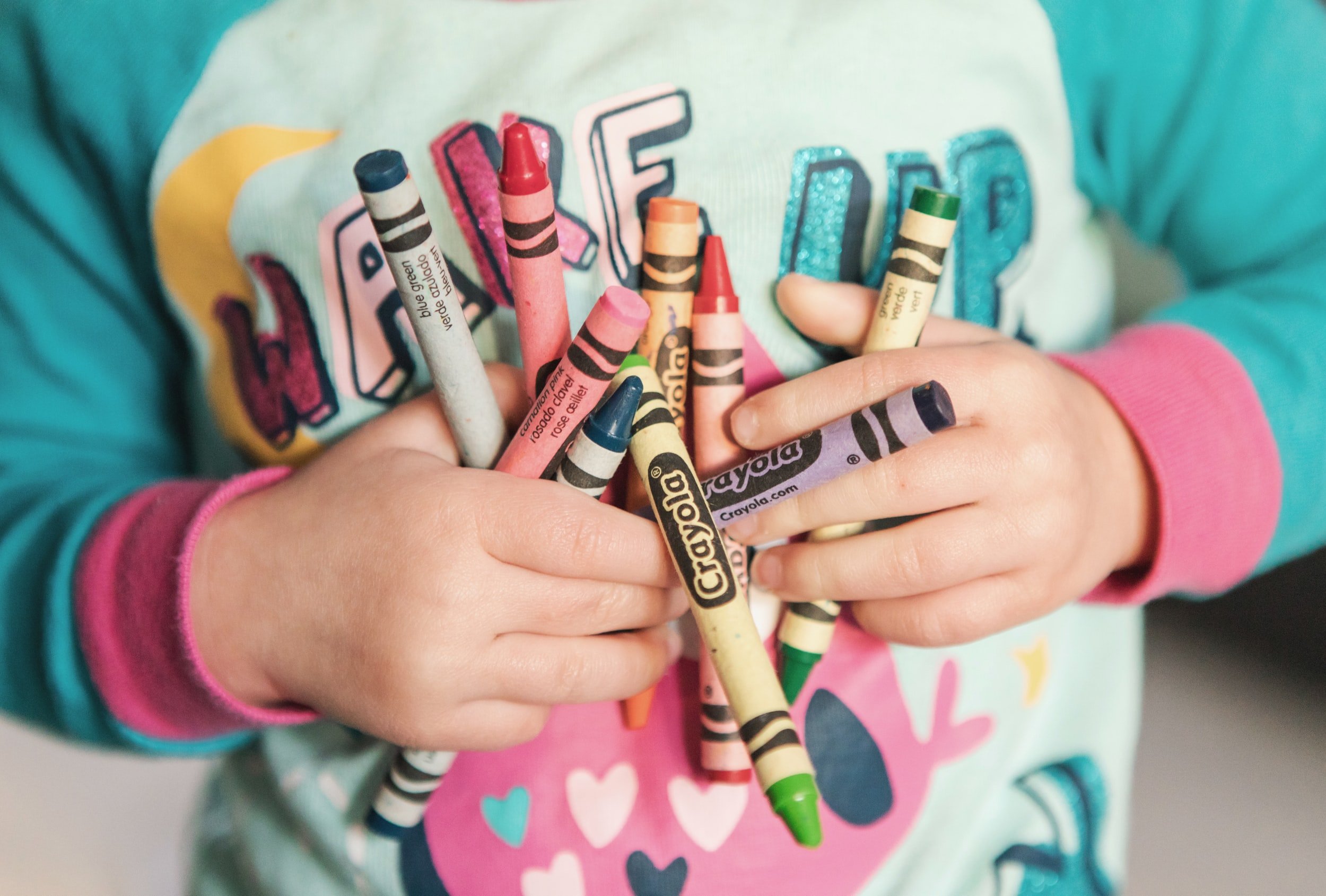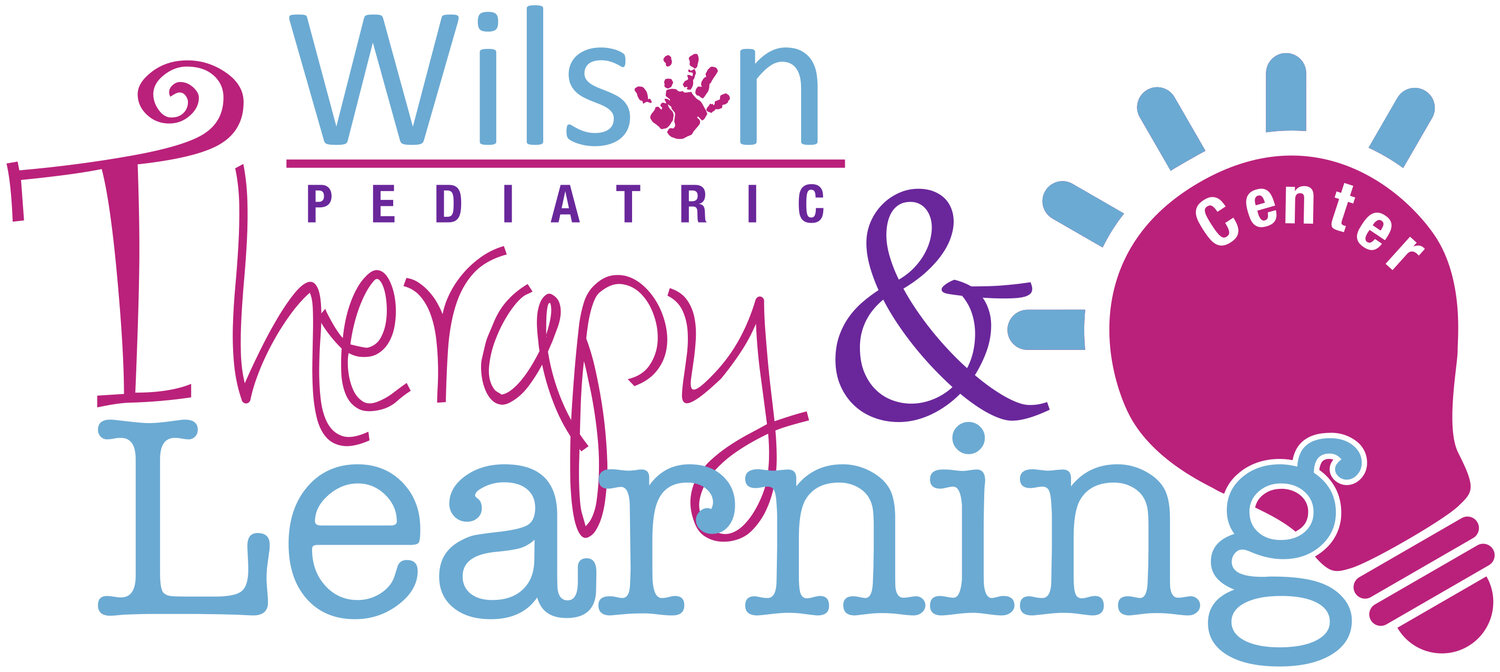
Year 3
24-36 Months
-
•Stands on one foot with hands on hips
•Jumps 24 inches both forward and down
•Usually walks with heel toe pattern and not primarily on toes
•Only leans on furniture, walls, or people and sits slumped over when tired
•Enjoys and seeks out various ways to move and play
•Walks upstairs using two feet on each stair
•Walks through a new room without bumping into objects and people
•Has adequate endurance and strength to play with peers
-
•Uses both hands equally to play and explore toys
•Coordinates hand and fingers
•Enjoys playing with a variety of toys and textures
•Establish hand preference
•Grasp a cup with one hand without spilling
•Grasp spoon and turn hand to bring to mouth
•Turn pages 1 at a time
•Build a tower using 8 cubes
•Fold paper in half
•Cut with scissors on line
•Turn doorknobs and jar lids
•String half-inch beads
-
24-30 months
•Consistently uses 2-3 word phrases
•Uses “in” and “on”
•At least 50% of speech is understood by caregiver
•Follows 2-step unrelated directions, e.g. “Give me the ball and go get your coat”
•Understands basic nouns and pronouns
•Understands “mine” and “yours”
30-36 months
•Asks “what” and “where” questions
•Uses plurals, e.g. “dogs”
•Most speech is understood by caregiver
•Simple understanding of concepts including color, space, and time
•Understands “why” questions
•Understands most simple sentences
-
•Eats the same foods as the rest of the family
•Feeds well with utensils
•Has definite food likes and dislikes & refuse certain foods
•Wipes own mouth and hands with a napkin or cloth
•Starts to serve themselves at the table with some spills
•Pours liquids into cup from a small container
-
•Recognize herself in the mirror or photograph and smile or make faces at herself
•Begin to say ‘no’ to bedtime and other requests
•Imitate adults’ actions and words (e.g. chores)
•Understand words and commands, and respond to them
•Hug and kiss parents, familiar people and pets
•Bring things to “show” other people
•Begin to be helpful around the house
•Begin to feel jealousy when she is not the center of attention
•Show frustration easily
•May play next to another child, but will not really share until 3 or 4 years of age
•Be able to play alone for a few minutes
•React to changes in daily routines
•Share a piece of food
•Develop a range of emotions (may have tantrums, show aggression by biting, etc)
•Start to assert independence by preferring to try to do things “by myself”, without help
-
•Understand simple stories
•Respond to simple directions
•Name some objects in a book
•Group objects by category (e.g. animals, clothing, food)
•Play pretend with dolls or stuffed animals
•Stack rings on a peg in order of size
•Put together simple puzzles (3-4 piece inset puzzles)
•Identify themselves in a mirror, saying “baby” or their own name
•Tell others what he is doing
•Learn to count “1-2-3”
-
•Tolerate new fabrics in clothing
•Tolerate a variety of smells and noises
•Tolerate haircuts without meltdowns
Red Flags
-
If you notice or are concerned about some of the following things about your child, you may want to talk to your physician or another health professional.
•Not meeting developmental milestones
• Walks on their toes all the time
• Eexcessively clumsy
• Something appears wrong with child’s legs and/or feet
• Complains of persistent pain or fatigue
• Skills are regressing
-
If you notice some of the following things about your child by 3 years old, you may want to talk to your doctor, or to another health professional such as an occupational therapist.
•Movements seem shaky or stiff
•Arms or hands seem very weak
•Still holding a crayon with a full fist
•Not able to hold scissors and snip on paper
•Not able to draw straight lines or circles
•Cannot stack up several blocks
-
If your 24-30-month-old shows 2 or more of the following, contact a speech-language therapist to ensure your child is not having difficulties with developing communication skills:
•Does not follow verbal instructions without needing gestures
•Does not add gestures to help get their meaning across when they have not been understood
•Does not understand more complex sentences (When….then)
•Frequently “echoes” words
•Does not use at least 100 words
•Is not saying some 2 and 3- word combinations
•Language development seems “stuck”
If your 30-36-month-old shows 2 or more of the following, contact a speech-language therapist to ensure your child is not having difficulties with developing communication skills:
•Vocabulary does not seem to be growing
•Not interested in talking with or playing with adults or other children
•Don’t show any pretend play skills (e.g. feeding a doll)
•Not putting words into 2-3 word sentences
•Not matching colors or pictures
•Cannot give their name when asked
•Does not understand the concept of big/little
•Does not use “no” to reject something or protest
•Not using words to get an adult’s attention
-
If your child is showing some of the following signs, it may be helpful to talk to your doctor or another health professional, such as a speech language pathologist or occupational therapist.
•Arching or stiffening of the body during feeding
•Coughing or choking during feeding
•Being very irritable/fussy during or after feeding
•Taking a really long time to feed (more than 30-45 minutes)
•Frequent spitting up
•Getting sick often with pneumonia or chest infections
•Gurgly, hoarse, or breathy voice
•Less than normal weight gain or growth
•Lots of leakage of food or liquid from the mouth
•Coughing, gagging, or throwing up during or after meals
•Stuffing mouth with food
•Holding food inside pockets in mouth for long periods
•Difficulty accepting new textures of food
•Avoidance behaviours to specific foods and textures (gagging, vomiting, blocking the spoon with hands or closed lips, crying, pushing food away, etc)
•Abnormal bowel movements that last longer than a few days (diarrhea, constipation, loose stool)
•Skin reactions to foods (dry patches, hives, rashes) Note: If your child seems to be having a severe allergic reaction to a food (difficulty breathing, turning red, developing hives or rash on the face/chest), you should seek medical help immediately.
-
If you notice some of the following things by the time your child is 18-24 months old, you may want to talk to your doctor, or to another health professional such as a speech-language pathologist, an occupational therapist, or a psychologist.
•Not interested in pretend play
•Has extreme difficulty separating from you
•Not starting or responding to simple interactions with other children
•Showing abnormal aggression
•Shows extreme fears that interfere with daily activities
•Is extremely “rigid” about routines
-
If you notice some of the following things by the time your child is 3 years old, you may want to talk to your doctor, or to another health professional such as a speech-language pathologist, an occupational therapist, or a psychologist.
•Is not interested in pretend play
•Is not able to do basic categorization (e.g. “find all the toys”, “find all the clothes”)
•Doesn’t understand the function of common objects ( e.g. find something you cut with)
•Continues to mouth toys, or is only interested in feeling or watching toys instead of playing with them
•Constantly moves from one activity to another and is not able to stay at an activity for brief periods
•Needs constant attention to stay at an activity or finish something
Information obtained from: